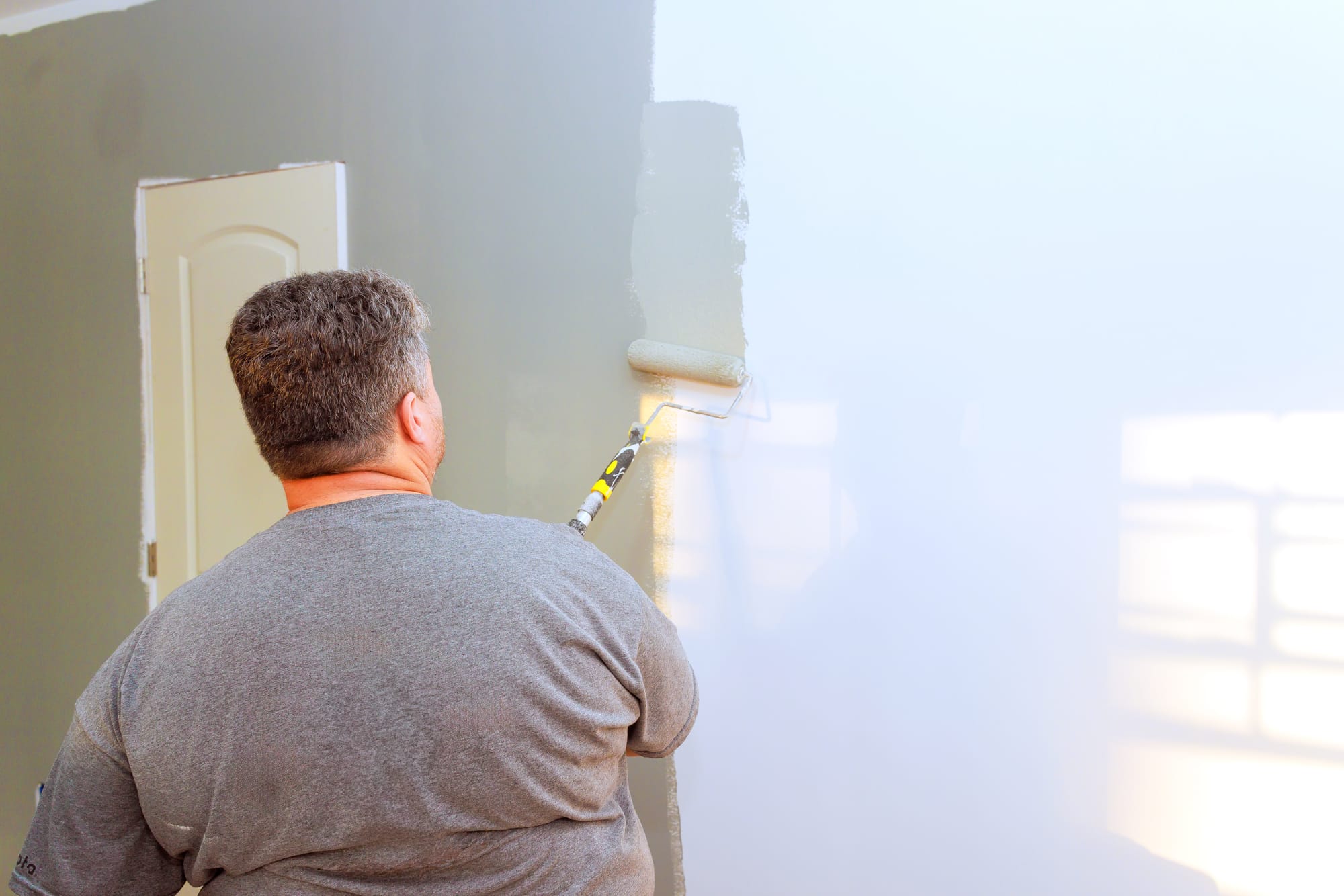One Coat of Paint Is Enough – Myth or Must?

Key Features
- One coat of paint is rarely enough, especially when changing colors or painting porous surfaces.
- Two coats ensure consistent color, durability, and coverage that lasts years longer.
- High-end paints improve coverage but usually still require two coats for professional results.
Is One Coat of Paint Really Enough?
We’ve all seen the paint cans boasting “one-coat coverage,” making it sound like you can be done before lunch. But is that actually true? As someone who's painted everything from entire commercial warehouses to 100-year-old Portland craftsman homes, let me cut through the marketing fluff: one coat of paint is usually a myth.
Sure, some high-end paints can pull it off under perfect conditions — but most of the time, one coat just doesn’t cut it. If you want your walls to look flawless and stay flawless, you're going to need two coats. Let me show you why.
Things to Know
- One coat only works in ideal conditions, like repainting the same color over a clean surface.
- Two coats extend paint life and reduce the need for early repaints.
- One thick coat is not a substitute for two proper coats — it causes issues.
- Paint quality matters, but so does technique and prep.
- Lightmen Painting always recommends two coats for top-tier results.
What Does “One-Coat Coverage” Really Mean?
When paint companies slap “one-coat” on the label, it usually means:
- The paint is highly pigmented
- It has a thicker consistency
- It offers good hide over similar base colors
But here’s the catch — it doesn’t guarantee full coverage if you're changing color dramatically, painting over a patchy surface, or working with textured walls. One coat might look good when wet, but give it a day and you’ll see every roller line and missed spot like a slap in the face.
When Can You Actually Get Away with One Coat?
It’s rare, but not impossible. Here’s when one coat might work:
| Situation | One Coat Possible? | Notes |
|---|---|---|
| Repainting same color | Yes | Especially if the surface is clean and uniform |
| Small touch-ups | Yes | Spot painting with leftover matching paint |
| High-end paint over primed wall | Maybe | Depends on contrast between primer and topcoat |
| Painting white over white | Yes (usually) | As long as the sheen and condition match |
If you're doing any sort of color change, texture fix, or dealing with patchiness — you need two coats.
Why Is Two Coats of Paint Better?
Two coats give you:
- Better color uniformity
- Improved durability
- Stronger stain resistance
- More protection from scrubbing or washing
- Longer-lasting results
Think of it like putting on sunscreen — one coat might seem okay, but you’ll regret not doubling up when things start breaking down.
What If You’re Using a Premium “One-Coat” Paint?
Even with top-of-the-line options like Behr Marquee, Sherwin-Williams Emerald, or Benjamin Moore Aura, most professionals still apply two coats. Why?
- The surface still matters
- The prep still matters
- The contrast in color still matters
Yes, high-end paint offers better coverage per coat, but that doesn’t make it bulletproof. You still need to seal the deal with a second pass.
How Do You Know If You Need a Second Coat?
Ask yourself these questions:
- Is the previous color showing through?
- Does the finish look uneven or blotchy?
- Can you see roller or brush marks?
- Are you painting a high-traffic area?
If yes to any of those — get rolling again.
What Surfaces Absolutely Need Two Coats?
Here’s where there’s no debate. Always apply two coats to:
| Surface Type | Reason |
|---|---|
| Drywall | First coat soaks in — second seals and evens it |
| Exterior siding | UV, rain, wind — it all needs protection |
| Kitchen/bath walls | High moisture and cleaning demands |
| Trim and cabinets | For durability and smoother finish |
| Wood (especially bare) | Porous and uneven without multiple layers |
Even if it looks “okay” after one — trust the process. Two coats = peace of mind.
Does a Second Coat Add That Much Value?
Absolutely. Here’s what the second coat does:
- Seals the first coat in place
- Eliminates color inconsistencies
- Smooths brush and roller lines
- Boosts overall durability
- Extends the life of your paint job by years
So yes — it’s worth every minute.
Can You Just Do One Thick Coat Instead?
Nope. That’s one of the most common amateur mistakes. A thick coat:
- Takes forever to dry
- Increases the risk of drips and runs
- Can trap air and moisture beneath
- Often looks sloppy
Thin, even coats — applied in layers — always win.
In Our Experience
We’ve been called in too many times to fix one-coat disasters. Uneven color, visible brush strokes, and premature peeling — all signs of a shortcut job. In 99% of cases, we apply two coats (sometimes more) because it’s just the right way to paint. It’s not about doing it fast — it’s about doing it right.
Is It Ever Smart to Do More Than Two Coats?
Sometimes. Here’s when:
- Drastic color changes (like red over white or vice versa)
- Painting chalky or dry surfaces
- Super matte finishes needing deeper saturation
- Stain or smoke-covered surfaces that bleed through
In these cases, even three coats is better than two mediocre ones.
What About Paint & Primer in One?
Paint-and-primer-in-one is a marketing term for high-adhesion paint. It doesn’t mean you get to skip surface prep — and it definitely doesn’t mean one coat will suffice on most jobs. It just means you get better coverage per coat.Still, for bold color changes or bare materials, priming separately and using two topcoats is the gold standard.
Do You Have Questions? Give Us A Call With Any & All! 503-389-5758
-
People Also Ask:
Can one coat of paint be enough for interior walls?
Sometimes — if you’re using the same color and high-quality paint on a clean surface. But even then, two coats are usually better.
Do professionals always apply two coats of paint?
Yes, in almost all situations. Two coats give better coverage, durability, and consistency, especially on high-traffic surfaces or color changes.
Why does one coat of paint look uneven?
Because it usually is. One coat doesn’t provide enough pigment or coverage for a uniform, finished look — especially over dark or patchy surfaces.
-
Subscribe to Our Blog & Elevate Your DIY Game! Never miss a beat! Join the Lightmen Painting community and get the latest insights on painting, DIY projects, and expert tips delivered straight to your inbox.
Have something specific in mind? We’d love to hear your ideas! Let us know what topics or projects you’re curious about—your input could shape our next post.
Need A Training Program For Your Employee's?
Just Want To Learn The Painting Industry?
^ Click Our Logo Above & Learn More! ^
If your in the Portland, Or. area and need advice or a free no obligation estimate call us at 503-389-5758 or email scheduling@lightmenpainting.com
Thanks for stopping by Lightmen Daily! Stay tuned for more practical tips and expert advice on making your painting projects flawless, from wall to floor!
Definitions
- One-Coat Paint – Paint marketed as having high coverage that may require only one layer.
- Two-Coat System – The standard method for durable and even paint application.
- Paint Coverage – The ability of paint to hide the surface beneath it.
- Topcoat – The final layer of paint applied to a surface for finish and protection.
- Paint and Primer in One – A high-build paint product meant to save time, though not always effective for priming.
- Color Uniformity – The evenness of a color without streaks, patches, or visible base layers.
- High-Traffic Areas – Places like kitchens, hallways, or doors that require durable paint applications.
- Saturation – The depth and richness of a paint color, often improved with multiple coats.
- Blotchy Finish – A patchy or uneven paint result caused by inadequate coverage.
- Recoat Time – The required dry time between coats to ensure proper adhesion and finish quality.
Lightmen Painting Serving: Portland, Tigard, Lake Oswego, Tualatin, West Linn, Milwaukie, Sherwood, Happy Valley, Oregon City, Beaverton, Hillsboro, Gresham
